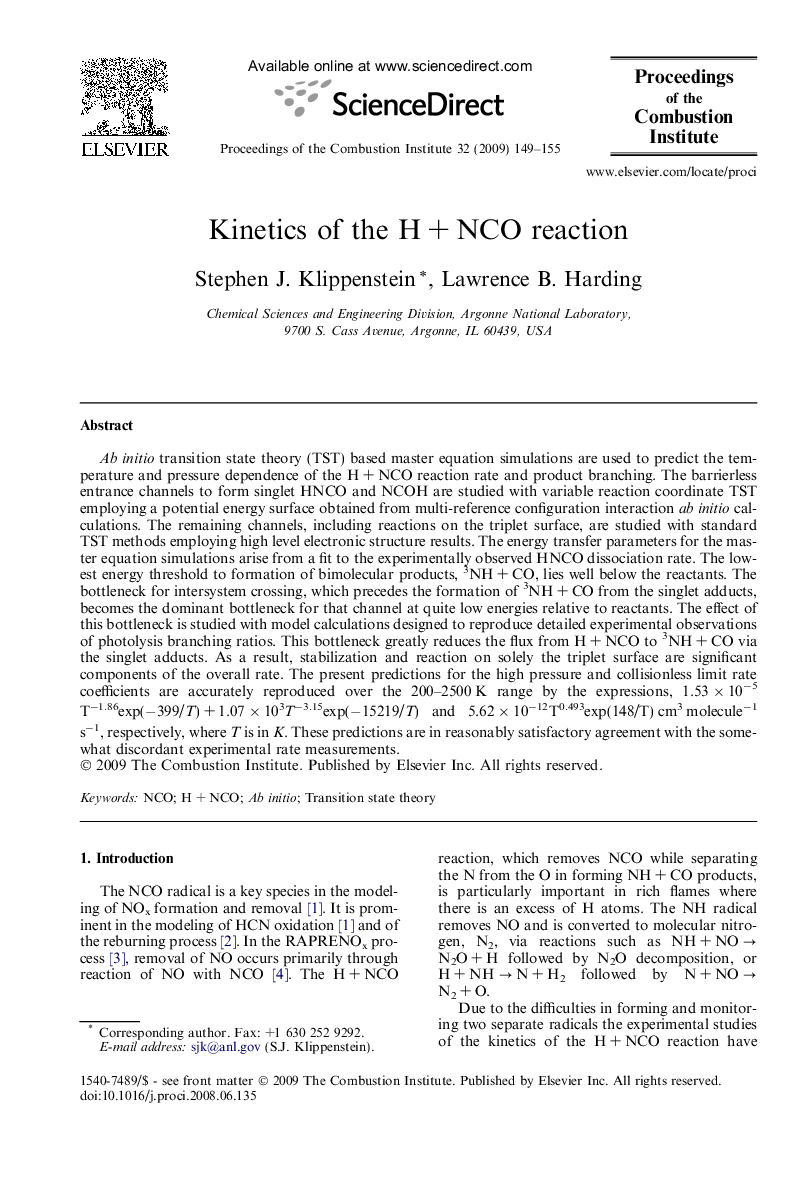| Article ID | Journal | Published Year | Pages | File Type |
|---|---|---|---|---|
| 6679399 | Proceedings of the Combustion Institute | 2009 | 7 Pages |
Abstract
Ab initio transition state theory (TST) based master equation simulations are used to predict the temperature and pressure dependence of the HÂ +Â NCO reaction rate and product branching. The barrierless entrance channels to form singlet HNCO and NCOH are studied with variable reaction coordinate TST employing a potential energy surface obtained from multi-reference configuration interaction ab initio calculations. The remaining channels, including reactions on the triplet surface, are studied with standard TST methods employing high level electronic structure results. The energy transfer parameters for the master equation simulations arise from a fit to the experimentally observed HNCO dissociation rate. The lowest energy threshold to formation of bimolecular products, 3NHÂ +Â CO, lies well below the reactants. The bottleneck for intersystem crossing, which precedes the formation of 3NHÂ +Â CO from the singlet adducts, becomes the dominant bottleneck for that channel at quite low energies relative to reactants. The effect of this bottleneck is studied with model calculations designed to reproduce detailed experimental observations of photolysis branching ratios. This bottleneck greatly reduces the flux from HÂ +Â NCO to 3NHÂ +Â CO via the singlet adducts. As a result, stabilization and reaction on solely the triplet surface are significant components of the overall rate. The present predictions for the high pressure and collisionless limit rate coefficients are accurately reproduced over the 200-2500Â K range by the expressions, 1.53Â ÃÂ 10â5Tâ1.86exp(â399/T)Â +Â 1.07Â ÃÂ 103Tâ3.15exp(â15219/T) and 5.62Â ÃÂ 10â12T0.493exp(148/T)Â cm3Â moleculeâ1Â sâ1, respectively, where T is in K. These predictions are in reasonably satisfactory agreement with the somewhat discordant experimental rate measurements.
Keywords
Related Topics
Physical Sciences and Engineering
Chemical Engineering
Chemical Engineering (General)
Authors
Stephen J. Klippenstein, Lawrence B. Harding,
